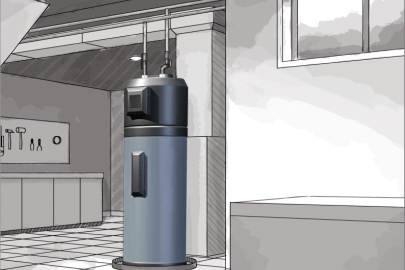Key Maintenance Tips for Your Home's Hot Water System
Go Deal NowEach person will have their private opinion in relation to How to Maintain Your Water Heater & Prolong its Life.

Warm water is necessary for daily convenience, whether it's for a refreshing shower or cleaning meals. To guarantee your hot water system runs successfully and lasts longer, routine upkeep is essential. This article supplies practical suggestions and understandings on how to keep your home's warm water system to avoid disturbances and expensive repair services.
Introduction
Preserving your home's warm water system could seem complicated, but with a couple of straightforward steps, you can ensure it runs efficiently for years to find. This overview covers whatever from recognizing your warm water system to DIY maintenance ideas and recognizing when to hire specialist help.
Significance of Preserving Your Warm Water System
Normal maintenance not only extends the life-span of your warm water system but also ensures it operates effectively. Ignoring upkeep can result in reduced effectiveness, greater power expenses, and also early failing of the system.
Signs Your Hot Water System Needs Maintenance
Knowing when your hot water system needs attention can avoid significant concerns. Keep an eye out for indicators such as irregular water temperature level, weird sounds from the heating system, or corroded water.
Purging the Hot Water Heater
Purging your hot water heater eliminates sediment accumulation, boosting effectiveness and extending its life.
Checking and Replacing Anode Rods
Anode rods prevent corrosion inside the tank. Examining and replacing them when worn out is critical.
Facility Concerns Needing Expert Help
Examples include significant leakages, electric issues, or if your water heater is consistently underperforming.
Regular Specialist Upkeep Perks
Professional upkeep can consist of complete assessments, tune-ups, and guaranteeing compliance with safety criteria.
Checking and Changing Temperature Setups
Changing the temperature settings makes sure ideal performance and safety and security.
DIY Tips for Maintenance
You can execute a number of maintenance jobs on your own to keep your warm water system in top condition.
Looking for Leaks
Regularly inspect pipelines and links for leakages, as these can result in water damages and greater bills.
Comprehending Your Hot Water System
Prior to diving into upkeep tasks, it's helpful to recognize the fundamental elements of your warm water system. Normally, this includes the hot water heater itself, pipes, anode poles, and temperature controls.
Regular Monthly Maintenance Tasks
Normal regular monthly checks can aid catch small issues prior to they escalate.
Examining Pressure Alleviation Valves
Testing the stress safety valve ensures it operates correctly and prevents extreme stress buildup.
Protecting Pipelines
Insulating warm water pipelines minimizes heat loss and can save power.
When to Call a Professional
While DIY upkeep is beneficial, some problems require expert proficiency.
Final thought
Normal maintenance of your home's hot water system is necessary for efficiency, durability, and price savings. By complying with these ideas and recognizing when to seek expert assistance, you can make certain a trustworthy supply of warm water without unexpected disruptions.
How to Maintain an Instant Hot Water Heater
Before tinkering with your hot water heater, make sure that it’s not powered on. You also have to turn off the main circuit breaker and shut off the main gas line to prevent accidents. Also turn off the water valves connected to your unit to prevent water from flowing into and out of the appliance. 2. When you’re done, you have to detach the purge valves’ caps. These look like the letter “T†and are situated on either side of the water valves. Doing so will release any pressure that has accumulated inside the valves while at the same time avoid hot water from shooting out and burning your skin. 3. When the purge valves’ caps are removed, you have to connect your hosing lines to the valves. Your unit should have come with three hoses but if it didn’t, you can purchase these things from any hardware or home repair shops. You can also get them from retail stores that sell water heating systems. Read the user’s manual and follow it to complete this task properly. When the hosing lines are connected, open the purge port’s valves. 4. You should never use harsh chemical cleaners or solutions when cleaning your unit. Make use of white vinegar instead. It should be undiluted and you’ll probably use about 2 gallons. 5. Now flush your water heater. This task should probably take about 40 minutes. We can’t give you specific directions for this because the procedure is carried out depending on the type, model and brand of your heater. With that being said, refer to the user’s manual. 6. When you’re done draining the unit, you have to turn off the purge port valves again. Remove the hosing lines that you earlier installed on each of the water valves. Put the valve caps (purge port) back in their respective places and be very careful so as not to damage the rubber discs that are found inside these caps. 7. Now that everything’s back in place, check your user’s manual again to find out how to reactivate your water heating system. 8. Once it is working, turn one of your hot water faucets on just to let air pass through the heater’s water supply pipes. Leave the tap on until water flows smoothly out of it. https://www.orrplumbing.com/blog/2014/september/how-to-maintain-an-instant-hot-water-heater/

As a keen reader about How to Maintain a Hot Water Heater in a Few Simple Steps, I was thinking sharing that piece of content was smart. Appreciated our piece? Please quickly share it. Let another person discover it. We thank you for reading our article about What Kind of Maintenance Do Water Heaters Need?.
Call Today